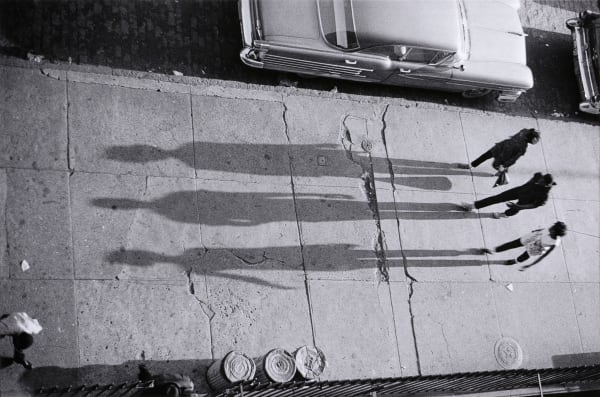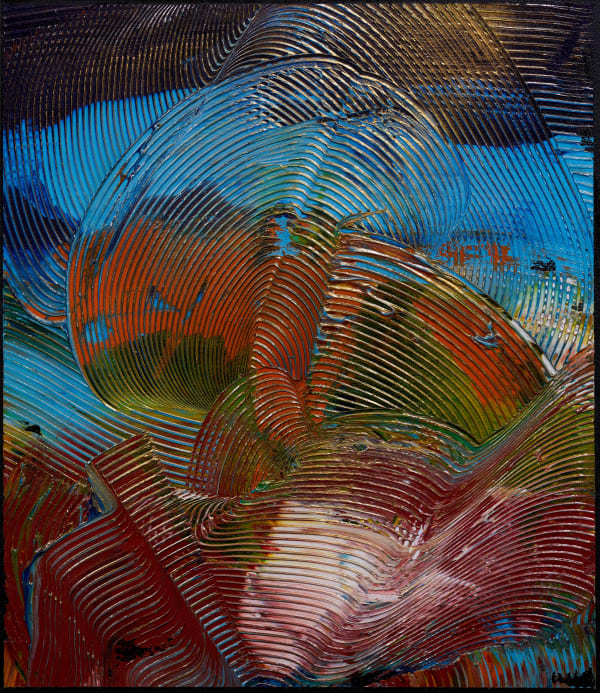-
“The artist is in his work. That is where you find him if you want to find him. Who he is, how he feels, what he thinks—and even that is limited. The artist is a living thing. He is always changing and growing older.”
— Adger Cowans
Adger Cowans is a multi-disciplinary artist whose career spans over six decades. Best known for his powerful black-and-white photography, Cowans has also built his career around abstract and experimental practices in painting. Cowans was born in 1936 in Columbus, Ohio. He comes from a proud family legacy that includes a great-great-grandfather who was a Buffalo Soldier and a cousin, Dr. Early Sherrard, who was a Tuskegee Airman.
Cowans’ artistic path began with music. He earned a scholarship for trumpet performance at Capital University, though his love for photography led him to become one of the first African American graduates in photography at Ohio University, earning a BFA and continuning his education at the School of Motion Picture Arts and the School of Visual Arts in New York.
-

Photography
Three Shadows, 1960, c.Cowans’ career in photography brought him to work with major publications and film studios. He became the first Black still photographer in Hollywood, working on sets with directors like Spike Lee and Francis Ford Coppola. In 1958, he moved to New York to work as an assistant for Gordon Parks at Life magazine. As a mentor, Parks encouraged Cowans to use his camera in the fight against racism and violence against Black people. Cowans has been recorded to have said “I took all that racism and rejection and everything, and I put it in my work, as one of the big things I learned from Gordon Parks was to take negative energy and turn it into positive power.” Following in the footsteps of his great-great-grandfather, Cowans also served as a photographer in the U.S. Navy until 1960.
In 1963, he and a collective of fellow New York photographers, including Louis Draper and Roy Decarava founded the Kamoinge Workshop. The workshop played a pivotal role in the Black Arts Movement. The group came together in the spirit of friendship, seeking artistic equality and empowerment. According to the official Kamoinge website, they chose the name due to its translation from the Gikuyu language in Kenya meaning “a group of people acting together.” The name expressed their dedication to mutual support and to using photography as a powerful, independent art form—one that represented Black communities through their own eyes and lived experiences, challenging the negative portrayals often found in mainstream art, media, and culture.
-

-
Legacy
Cowans' work has been published in several magazines, including Essence, Ebony, Esquire, Harper’s Bazaar, Life, Time, and Modern Photography, and has been exhibited at the Metropolitan Museum of Art, the Museum of Modern Art, The Studio Museum of Harlem, The Cleveland Museum of Art, and the Harvard Fine Art Museum, among others. He has also taught photography at Wayne State University, the University of Michigan, and the Cleveland Institute of Arts. There is currently documentary film in production about the life and work of Adger Cowans, produced by Black Art Auctions and 21st Editions. Today, Adger Cowans continues a rich photography and painting practice from his studio in Connecticut.
You can see more of Adger Cowans work on his website https://www.adgercowans.com/
-
Collection Spotlights
-

Adger Cowans
Orbiting Series , 1998Resin fragments and gold powder over acrylic ground on canvas
60 x 72 in.
152.4 x 182.9 cm -

Adger Cowans
Untitled , 2007acrylic pushed through a perforated screen on canvas
21 1/4 x 21 1/4 in.
54 x 54 cm -

Adger Cowans
Untitled, 1973acrylic with gold powder on canvas
22 3/4 x 20 1/4 in.
57.8 x 51.4 cm -

Adger Cowans
Untitled, 1970acrylic and gold powder on green vinyl
39 x 39 in.
99.1 x 99.1 cm -

Adger Cowans
Three Shadows, 1960, c.Photograph
17 x 22 in.
43.2 x 55.9 cm -

Adger Cowans
Stalk II (Comb Piece), 1970, c.Acrylic on canvas
27 x 23 in.
68.6 x 58.4 cm
-
Current viewing_room








